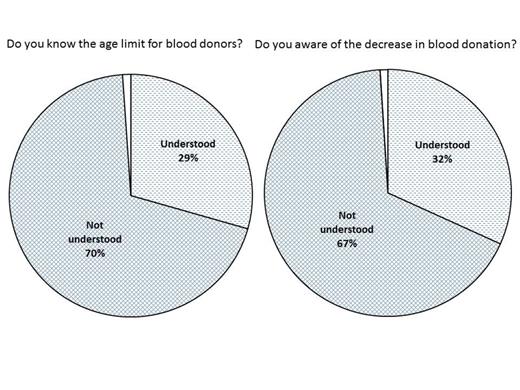Abstract
Introduction: Blood donor recruitment and retention in the younger generation is an important concern in several countries with an aging population. In Japan, which is going to have an aging population, the number of blood donors has decreased by 15% over the past decade. As such, drastic measures must be taken to maintain the necessary blood stocks. The promotion of blood donation in high schools has been attempted in many countries. This strategy is particularly attractive because successful recruitment of young donors will ensure long term supplies of blood are maintained. To enhance the effectiveness of this approach it is important to communicate the need for blood donation by high school students and conduct appropriate surveys. Although there have been several reports on the promotion of blood donation by young people, these have not generally analyzed their psychology, personal environment and the views of large numbers of high school students.
Materials and Methods: The study was accepted with each high school staff meeting and IRB in our university (#25-159). Inquiry anonymous surveys were designed for high school students, who answered by their own volition. The survey included 50 questions as follows; gender; age; build; previous blood donation by the individual as well as family members and friends; lifestyle; diet; views concerning blood demand in society; location of blood donation centers; knowledge of blood donation methods; blood recovery after donation; reasons for declining to give blood; ideas for an effective campaign to recruit blood donors; previous education on blood donation in their school etc. Individual views concerning an effective campaign to recruit new donors, events, characters and media were given in a free style. This work was supported by the Japanese Ministry of Health, Labor and Welfare (H25-medicine-general-022).
Results:We obtained answers from 94% of students surveyed (16,333). The first and second studies were done in 2013 and 2014, and included 8,456 and 7,877 students, respectively. In the first study, the male/female ratio was 0.88. 1% and 26% of student body weights were <40kg and <50kg, respectively. 8% of students had at least one experience of blood donation. 3% of the students could not donate blood due to medical reasons (e.g., anemia). 62% of the students often experienced feelings of fatigue in their daily life. 5% of the students suffered sleeplessness. 31% of the students believed in the existence of synthetic blood. 54% of the students did not know the location for blood donation. Only 18% of the students understood the process of blood donation in outline. Moreover, only 29% of students knew the age limit for blood donors. 32% of the students were aware of the decrease in blood donation and the future inadequacy of blood supplies. 66% of the students had previous volunteer experience. 48% of the students misunderstood the risk of contracting a viral infection by blood donation. 26% of the students feared pain caused by needles. 51% of students requested more information from schools and other institutions. Suggested ways to promote blood donation included television (21%), school classrooms (19%), Twitter or Facebook (11%), mobile blood donation units (11%), software applications on cellular phones (8%) and newspaper advertisements (6%). A considerable number of respondents suggested an effective way to recruit more volunteers was to carry out this kind of survey amongst students.
Conclusions: Our survey provided a lot of information concerning blood donation from high school students, which will be applicable to a number of countries. The study clarified that many students lack sufficient information about blood donation and transfusion. Moreover, a considerable number of students suffer a lot of stress and fatigue in their daily life. Substantial time and effort must be devoted to educating the student population on the need for blood transfusion, as well as the safety and risk factors associated with blood donation. Moreover, their psychology, daily life and views concerning transfusion medicine must be better understood.
No relevant conflicts of interest to declare.
Author notes
Asterisk with author names denotes non-ASH members.


This feature is available to Subscribers Only
Sign In or Create an Account Close Modal